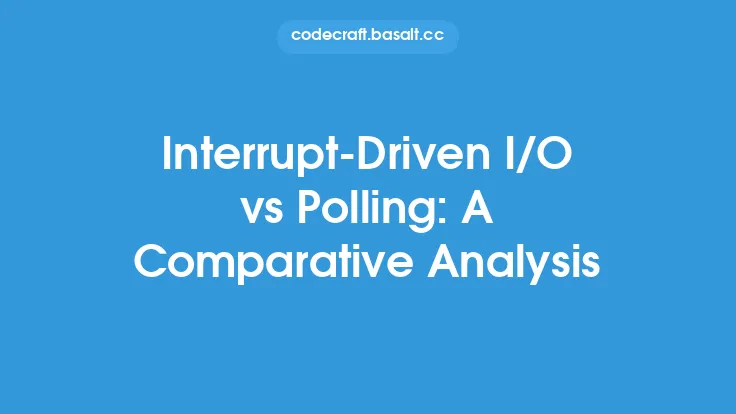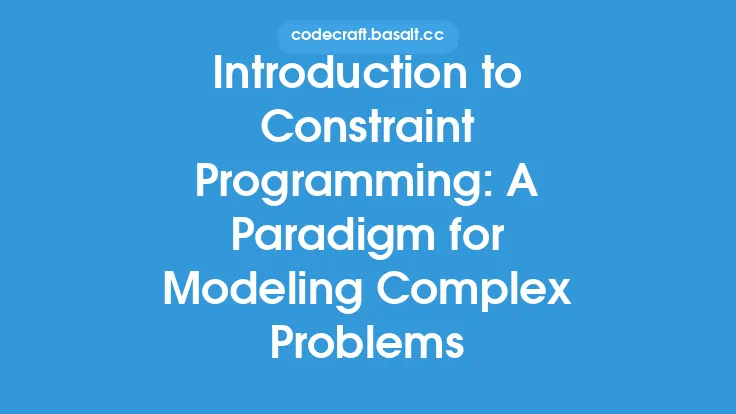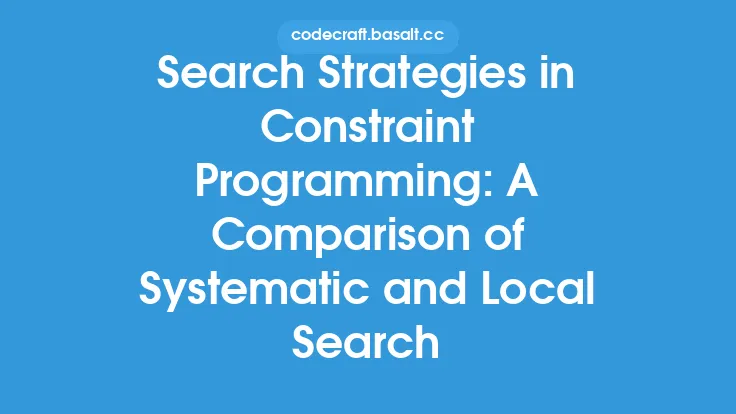Constraint programming is a powerful paradigm for modeling and solving complex problems, but how does it compare to other programming paradigms? In this article, we will delve into the details of constraint programming and compare it to other popular paradigms, highlighting its strengths and weaknesses.
Introduction to Programming Paradigms
Programming paradigms are fundamental styles or approaches to writing software. They provide a framework for thinking about and organizing code, and each paradigm has its own set of principles, methodologies, and tools. Some of the most well-known programming paradigms include object-oriented programming, functional programming, imperative programming, and declarative programming. Constraint programming is a type of declarative programming that focuses on specifying the constraints of a problem rather than the steps to solve it.
Comparison with Object-Oriented Programming
Object-oriented programming (OOP) is a paradigm that organizes software design around objects and their interactions. OOP is based on concepts such as encapsulation, inheritance, and polymorphism, which allow for the creation of complex systems that are modular, reusable, and maintainable. In contrast, constraint programming is based on the idea of specifying constraints and letting the solver find a solution that satisfies those constraints. While OOP is well-suited for modeling complex systems with many interacting components, constraint programming is better suited for solving complex optimization problems or problems with many constraints. For example, in a scheduling problem, OOP might be used to model the schedule and the interactions between different tasks, while constraint programming would be used to find a schedule that satisfies all the constraints, such as task dependencies and resource availability.
Comparison with Functional Programming
Functional programming is a paradigm that emphasizes the use of pure functions, immutability, and recursion to write software. Functional programming is based on the idea of composing functions to solve problems, and it is well-suited for problems that can be broken down into smaller, independent sub-problems. Constraint programming, on the other hand, is based on the idea of specifying constraints and using a solver to find a solution that satisfies those constraints. While functional programming is well-suited for problems that require compositionality and referential transparency, constraint programming is better suited for problems that require finding a solution that satisfies many constraints. For example, in a problem involving scheduling and resource allocation, functional programming might be used to model the scheduling and allocation functions, while constraint programming would be used to find a schedule and allocation that satisfy all the constraints, such as task dependencies and resource availability.
Comparison with Imperative Programming
Imperative programming is a paradigm that emphasizes the use of statements that change the state of the program, such as assignment statements and loops. Imperative programming is based on the idea of specifying the steps to solve a problem, and it is well-suited for problems that require a lot of control over the execution of the program. Constraint programming, on the other hand, is based on the idea of specifying constraints and letting the solver find a solution that satisfies those constraints. While imperative programming is well-suited for problems that require a lot of control over the execution of the program, constraint programming is better suited for problems that require finding a solution that satisfies many constraints. For example, in a problem involving optimization, imperative programming might be used to implement a custom optimization algorithm, while constraint programming would be used to model the optimization problem and let the solver find a solution that satisfies all the constraints.
Comparison with Declarative Programming
Declarative programming is a paradigm that emphasizes the specification of what the program should accomplish, rather than how it should accomplish it. Declarative programming is based on the idea of specifying the properties of the solution, rather than the steps to solve the problem. Constraint programming is a type of declarative programming that focuses on specifying the constraints of a problem, rather than the steps to solve it. Other types of declarative programming include logic programming and database query languages. While declarative programming is well-suited for problems that require specifying the properties of the solution, constraint programming is better suited for problems that require finding a solution that satisfies many constraints. For example, in a problem involving scheduling and resource allocation, declarative programming might be used to specify the properties of the schedule and allocation, while constraint programming would be used to find a schedule and allocation that satisfy all the constraints, such as task dependencies and resource availability.
Technical Comparison
From a technical perspective, constraint programming is based on a set of fundamental concepts, including variables, domains, and constraints. Variables are the unknowns of the problem, domains are the sets of possible values for each variable, and constraints are the relationships between the variables that must be satisfied. Constraint programming solvers use a combination of constraint propagation, search, and optimization techniques to find a solution that satisfies all the constraints. In contrast, other programming paradigms are based on different fundamental concepts, such as objects and classes in object-oriented programming, functions and recursion in functional programming, and statements and loops in imperative programming. While other paradigms may be able to solve some of the same problems as constraint programming, they often require more code and are less efficient than constraint programming solvers.
Conclusion
In conclusion, constraint programming is a powerful paradigm for modeling and solving complex problems, and it has many advantages over other programming paradigms. While other paradigms, such as object-oriented programming, functional programming, imperative programming, and declarative programming, are well-suited for certain types of problems, constraint programming is better suited for problems that require finding a solution that satisfies many constraints. By specifying the constraints of a problem and using a solver to find a solution, constraint programming can solve complex optimization problems and problems with many constraints more efficiently and effectively than other paradigms. As the field of programming continues to evolve, it is likely that constraint programming will play an increasingly important role in solving complex problems in a wide range of domains.





